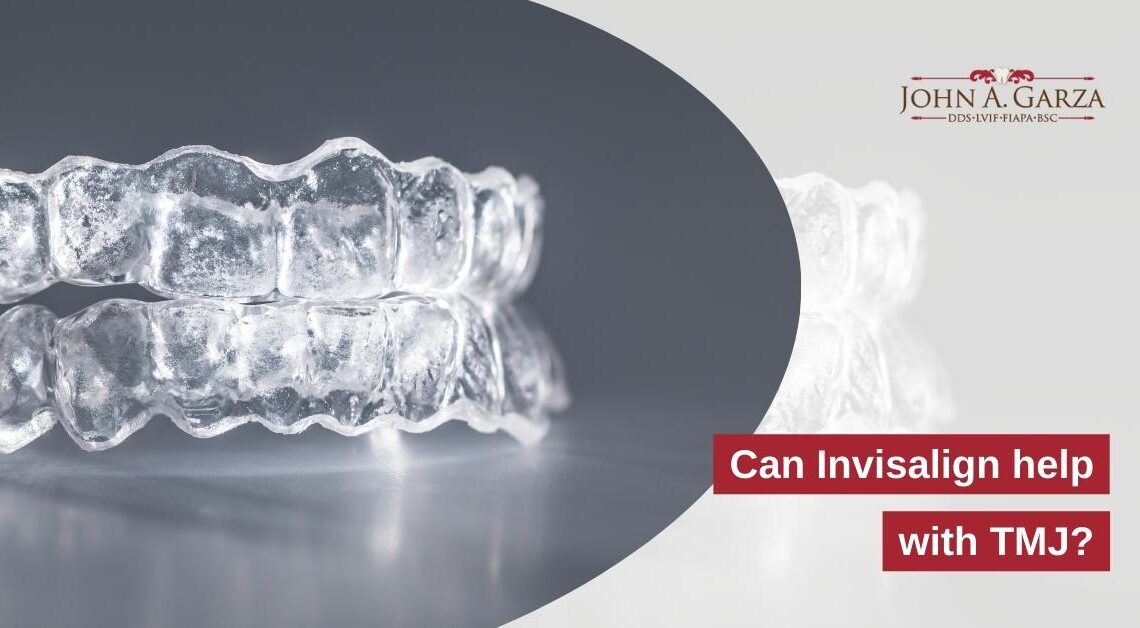TMJ pain can be severe for those who suffer from it. A person might suffer physically and psychologically, and physiologically if even the simplest of daily activities, such as yawning and eating, become burdensome.
It can be challenging to identify solutions that work from a treatment perspective. This isn’t because your dentist isn’t trying hard enough or doesn’t have enough experience; rather, it’s because TMJ problems are notoriously tough to treat.
In this article, we’ll explore does Invisalign helps with jaw alignment.
How Invisalign Works
Orthodontic treatment can be made easier with the use of Invisalign, a brand of clear aligners. SmartTrack is the brand name of the thermoplastic material used to make the aligner.
Invisalign is excellent at what it does, but it doesn’t always function as well as traditional braces in all cases. Invisalign’s suitability for you will mostly depend on your treatment goals and the severity of your case. Invisalign focuses on moderate situations and is not as effective at correcting severe orthodontic problems that would ordinarily necessitate more sophisticated procedures.
Clear aligners from Invisalign are completely undetectable to the naked eye. Taking them out for meals, drinking, brushing your teeth, and flossing are just a few of the many reasons to do so. No metal brackets or wires that could irritate your mouth and cause an emergency visit to the doctor are present.
The TMJ Problem
TMJ, also known as sleep bruxism, can result in chipped teeth, enamel erosion, gum recession, and dental work damage.
Some individuals grind their teeth sometimes, typically when stressed. TMJ disorders in adults are chronic and require treatment. There are various treatments to avoid teeth grinding, but a nightguard or braces are the most common.
Nightguards with full covering prevent teeth from grinding. Other devices prevent clenching by relaxing the muscles involved in clenching. Your lips and jaw can be retrained to stop grinding and clenching.
Misaligned jaws can develop into TMJ disorder. There are numerous potential causes for TMD, and occasionally there is no apparent cause. However, misaligned bites (malocclusion) are frequently to fault for TMJ issues. The two rows of teeth should fit together comfortably when the mouth is closed. If they do not meet properly, your jaw has to work harder when speaking or chewing to compensate for the misalignment. This additional stress might cause jaw and adjacent muscle pain.
The following are examples of orthodontic issues that may result in TMD:
- Crooked teeth
- Crowded teeth
- Open bite
- Crossbite
- Underbite
- Overbite
- Gaps in teeth
If you’re in too much pain to maintain good oral hygiene, you’re at greater risk for gum disease and cavities. Braces are the practical and obvious choice. However, Invisalign also works to realign the lower and upper jaws, hence alleviating pain and discomfort.
Why Invisalign Braces Eliminate TMJ Problems
The search for a treatment for TMJ problems can be excruciating for those who are affected. TMJ dysfunction symptoms can often be alleviated by an orthodontist using Invisalign treatment. Using a series of virtually invisible aligners, Invisalign works progressively to realign a patient’s teeth over time.
The aligners for Invisalign braces are worn for 20 to 22 hours each day, including sleeping in them. Teeth grinding and joint damage are minimized since the appliances act as a barrier between your upper and lower jaws as you sleep.
The grinding will lessen as your bite becomes healthier and more aligned with Invisalign, not because the aligners are in place. You’ll also notice a reduction in headaches and pain in your neck and face. By retraining the muscles that cause teeth grinding, the aligners assist in alleviating the symptoms of TMJ dysfunction.
Temporomandibular joint movement is painless when teeth are in proper alignment. Joint discomfort and irritation can occur due to teeth that are misaligned. With Invisalign braces, you may straighten your teeth without having to wear bulky metal braces.
Speak With Our Orthodontist
Consider an orthodontist’s Invisalign designation while making a decision about whether or not you want to use Invisalign. Anything you practice regularly will improve with time and repetition. This is a given. Orthodontic treatment is the same way. The orthodontists who treat their patients using Invisalign daily will have an advantage over those who use metal braces almost exclusively.
Even if the designation of an Invisalign provider is crucial, you should examine other aspects of the orthodontist office when making a decision about where to attend. Additionally, it would be best to think about how they handle patients, how much they charge, and whether or not you’re at ease in the environment they’ve created before making a choice.
Getting an orthodontic checkup is your first step toward learning more about the use of aligners to treat TMJ issues. If you’re in too much discomfort to brush and floss your teeth, you’re increasing your chance of developing gum disease and cavities. That’s why it’s so vital to talk to our orthodontist about Invisalign. You can feel better and take better care of your oral health with Invisalign aligners since they are custom-made to fit your teeth.
Consult with Garza DDS to learn more about how Invisalign can help with TMJ
If you’re wondering whether Invisalign can fix TMJ, consult with Garza DDS to learn more about how Invisalign can help. In many cases, this treatment is the best chance of eliminating discomfort and improving your quality of life. As a result, it can also alleviate symptoms of TMJ disorder, including facial fatigue and jaw pain. With a custom-made plan that fits your specific needs, Invisalign can give you the smile you deserve – without all the headaches that come with traditional braces.


